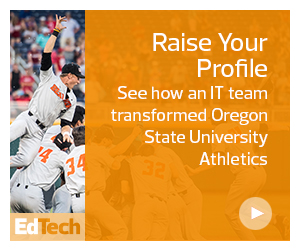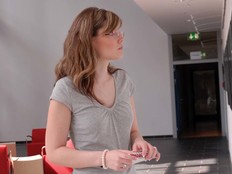Academic Support Pays Off in High Graduation Rates
Virtually all MSU Spartans carry their own mobile devices, but they also need a dedicated space where they can focus on class work and collaborate with others, says Woodruff.
“They’re going to look for a quiet space to do their work, whether it’s on a laptop, iPad or whatever,” she says. “They still need the feel of a lab environment, regardless of whether there are computers in it.”
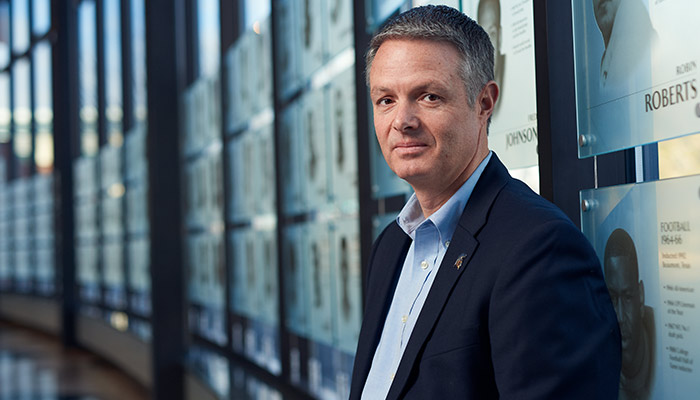
Todd Edwards directs the student-athlete support services at Michigan State University, which graduates 88 percent of its student-athletes. Photography by: Logan Zillmer.
The extra attention to academic support is paying dividends. MSU recently recorded the highest student-athlete graduation rate in its history: 88 percent of student-athletes who entered the university between 2008 and 2011 obtained their degrees within six years, Edwards says.
Part of that success is due to stability in MSU’s coaching ranks, he says. But much of the credit goes to the Smith Center’s close ties to faculty and staff. “It’s the attention our staff gives to students individually, as well as our collaboration with the rest of the campus,” he says. “Our relationships with our colleagues on campus are crucial in supporting our students.”
Services Help Student-Athletes Fit Coursework Into Busy Schedules
A big reason colleges build dedicated academic centers is that athletes have greater demands on their time and more rigorous schedules than other students, says Mike Meade, president of the National Association of Academic and Student-Athlete Professionals. In addition to schoolwork, they have varying schedules and commitments for practices, workouts and competitions.
“We have athletes attending strength and conditioning workouts at 5:30 in the morning. We have other teams practicing in the afternoon or at different times based on their competitive seasons,” says Meade, who is also the senior associate athletics director for academic services at the University of Oklahoma. “The availability of traditional student services may not align with when student-athletes are available to work on their academic responsibilities.”
Student-athletes also must comply with the National Collegiate Athletic Association’s academic requirements. Division I athletes, for example, must log at least 24 credit hours in their first year, with a minimum grade point average of 1.8, completing at least 40 percent of their degree coursework by the end of year two and 60 percent after their junior year.
Desktops and Tablets Help Students Hit Their Marks
Helping students meet the requirements of the NCAA, Big 12 and the university is a key goal of Texas Tech’s Marsha Sharp Center, says Suzanne Dickenson, director of academic and student services on the Lubbock, Texas, campus.
About 90 percent of the institution’s 400 student-athletes use the center to meet with academic advisers, receive tutoring and prepare themselves for the world beyond college, Dickenson says.
The Sharp Center features two computer labs containing 40 Dell desktop computers and four Xerox multifunction printers.
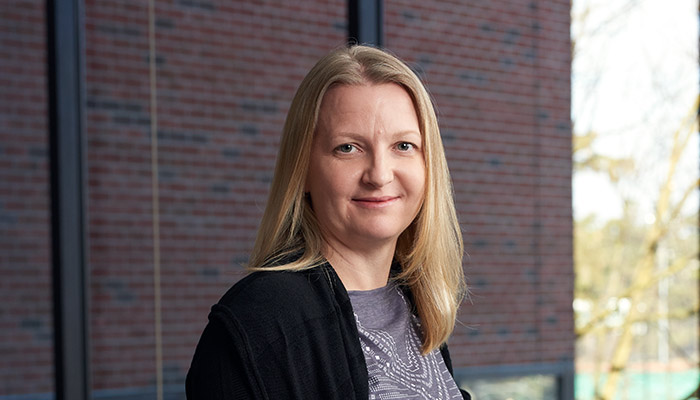
Sara Woodruff is the IT coordinator for Michigan State University’s student-athlete support services, including technology-enabled classrooms and computer labs. Photography by: Logan Zillmer.
In addition, Texas Tech distributes second- and third-generation iPad Pros to each athlete, says IT Director Matt Thompson. It also plans to equip each of its 24 tutorial rooms with an Apple TV device, so students can connect their iPads and project the content on a big screen.
Like MSU, Texas Tech boasts a graduation rate for student-athletes that’s well above the average for all students. Some 84 percent graduate within five years, versus just 60 percent for the nonathlete population.
The biggest challenge is persuading athletes that the Sharp Center is really there to help them, says Dickenson.
“One of the toughest things is getting them to show up, especially freshmen who don’t understand that we’re just here to make sure they’re successful,” she notes. “Sometimes we have to give them a little push.”
Student-Athlete Centers Boost Recruiting and Retention Efforts
The University of Iowa’s Gerdin Athletic Learning Center serves 650 student- athletes, who use it nearly 40,000 times each year. The renovated 28,000-square-foot facility is divided into three floors packed with the latest technology.
The open-plan first floor features a dozen iMac all-in-one computers, printers and a cafe. The second and third floors offer tutoring spaces, study areas and classrooms with 20 Dell Optiplex 7050 desktops, each with dual 24-inch monitors.
In meeting rooms, students can connect their laptops to flat-screen TVs mounted to the walls. Throughout the building, digital signage displays tutoring schedules, counselor availability and news announcements.
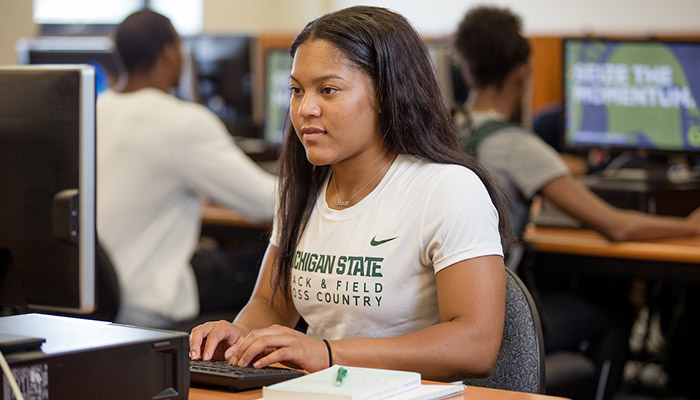
Campus leaders recognize that student-athletes face a unique set of challenges as they balance demanding practice schedules with academic work and social lives. Photography by: Matthew Mitchell Photography.
Flexible spaces are a higher priority than central computer labs, says Elizabeth Tovar, associate athletics director for student-athlete academic services.
“Every student-athlete who comes through our doors is able to find a place that meets their own personal study needs,” she says. “They can grab a snack from the cafe and sit down in one of our study booths.
For us, it comes down to technology, making sure the space is functional for student-athletes and having all the resources they need to be academically successful.”
Universities Set Goal to Empower Students
Facilities like the Gerdin Center serve as powerful recruiting and retention tools, says Tovar. “One of the most gratifying things for me is seeing the reaction of recruits as they walk through the building,” she says. “We really feel like we have one of the premier academic services centers in the country.” That said, state-of-the-art technology is the key to success for all students, says Eddie Etsey, the University of Iowa’s director of athletics IT.
“Our goal as an institution is to empower all students to be successful, graduate and get the best jobs they can,” he says. “We try to create a very welcoming space, where the technology is diverse and caters to all students, not just specific ones.”





